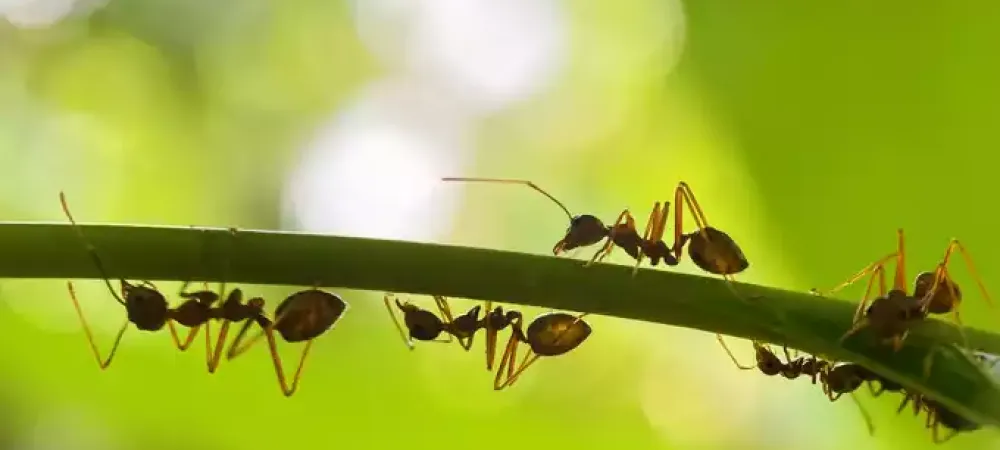Getting Rid of Ants in Illinois: A Comprehensive Guide

If you've ever dealt with ants in your Illinois home or garden, you know just how persistent these tiny invaders can be. Ants are fascinating creatures with complex social structures and behaviors, but when they invade our spaces, they can quickly become a nuisance. In this blog, we’ll explore the common species of ants found in Illinois, their habits, effective DIY control methods, and prevention strategies to keep them at bay.
Common Ant Species in Illinois
Illinois is home to a variety of ant species, each with unique characteristics and behaviors. Here are some of the most prevalent ones:
1. Carpenter Ants (Camponotus spp.)
- Identification: Carpenter ants are among the largest ants found in Illinois, ranging from ¼ to ½ inch in length. They are usually black or dark brown.
- Habits: Unlike termites, carpenter ants do not eat wood but excavate it to build their nests. They prefer moist, decaying wood and are often found in areas like window frames, doorways, and behind bathroom tiles. A single queen in a carpenter ant colony can live up to 15 years and produce thousands of offspring.
- Control: Locating and eliminating the nest is crucial. Use bait stations or insecticidal dust in the nest.
Pavement Ants (Tetramorium caespitum)
- Identification: These ants are small, about 1/8 inch long, and dark brown to black. They are named for their habit of nesting in or under cracks in pavement.
- Habits: Pavement ants are omnivorous and forage for a variety of foods, often invading homes in search of crumbs and other food particles. They can establish colonies with populations ranging from several hundred to tens of thousands of ants.
- Control: Bait traps are effective. Place them near ant trails and entry points.
Odorous House Ants (Tapinoma sessile)
- Identification: These ants are small, about 1/8 inch long, and brown or black. When crushed, they emit a foul odor, similar to rotten coconut.
- Habits: Odorous house ants are attracted to sweet foods and are often found in kitchens and pantries. They can nest in a variety of locations, including wall voids and under floors. Odorous house ants can develop multiple queen colonies, making them particularly difficult to eradicate without proper control measures.
- Control: Keeping food sealed and clean surfaces is key. Use bait traps to eliminate the colony.
DIY Ant Control Methods
Dealing with an ant infestation can be frustrating, but there are several DIY methods you can try before calling in the professionals:
- Baiting: Using commercial ant baits is one of the most effective ways to control ants. Baits work by attracting ants to a food source laced with insecticide, which they then carry back to their colony. This method targets the entire colony rather than just the ants you see.
- Natural Remedies: For those looking for a more natural approach, substances like diatomaceous earth, vinegar, and essential oils (such as peppermint or tea tree oil) can repel ants. Sprinkle diatomaceous earth around entry points, spray vinegar solution along trails, or place cotton balls soaked in essential oils near ant entry points.
- Barrier Methods: Seal cracks and crevices in your home’s foundation, windows, and doors to prevent ants from entering. Use weather stripping and caulking to close off potential entry points.
How to Prevent an Ant Infestation
Preventing ants from becoming a problem in the first place is often easier than dealing with an existing infestation. Here are some prevention tips:
- Maintain Cleanliness: Keep your home clean, especially kitchen areas. Wipe down counters, sweep floors, and promptly clean up spills. Store food in airtight containers and avoid leaving pet food out for extended periods. According to the National Pest Management Association (NPMA), ants are the number one pest problem for which homeowners seek professional help.
- Manage Moisture: Ants are attracted to moisture, so fix any leaks in your plumbing, roof, or basement. Use a dehumidifier in damp areas to reduce humidity.
- Regular Inspections: Regularly inspect your home and property for signs of ant activity. Look for trails, nests, and wood damage, especially in areas prone to moisture.
Don’t Wait - Call the Professionals at Crist Termite & Pest Solutions, Inc
Ants are fascinating but can become a significant nuisance if left unchecked. By understanding their habits, employing effective control pest control methods, and taking preventive measures, you can keep your Illinois home ant-free. For severe infestations, it’s always best to consult with a professional pest control service to ensure complete eradication. At Crist Termite & Pest Solutions, Inc we have over 75 years of experience dealing with the toughest Illinois pest and we look forward to solving your pest problems.
